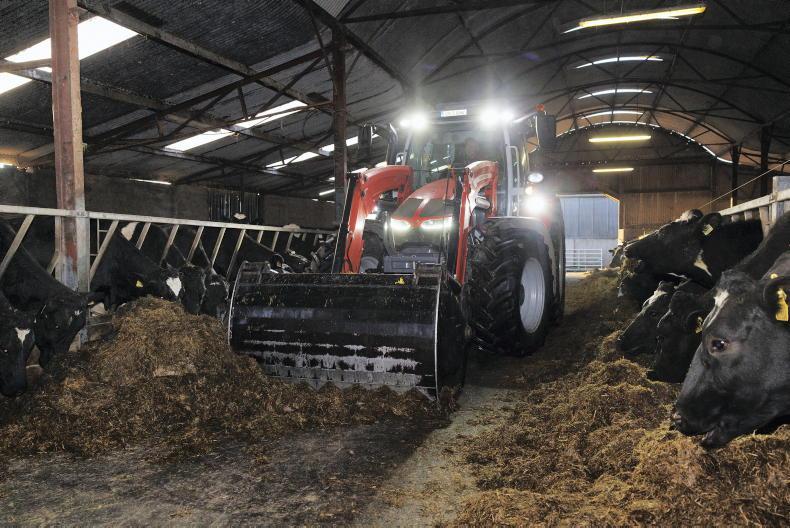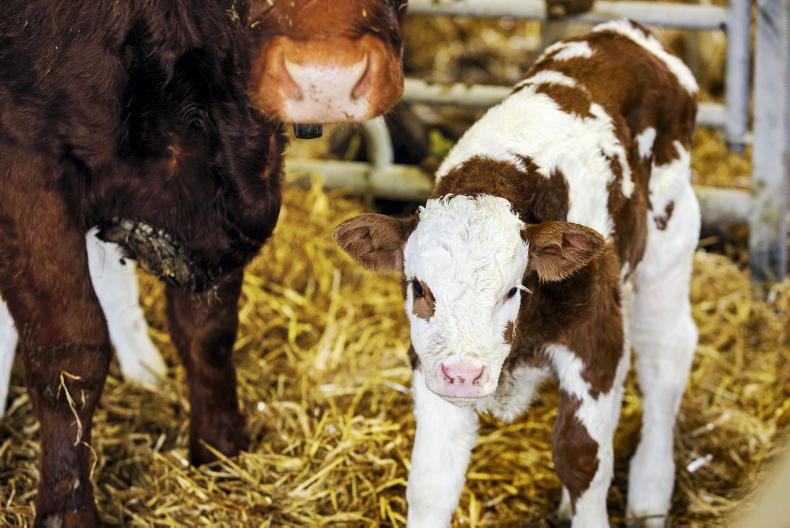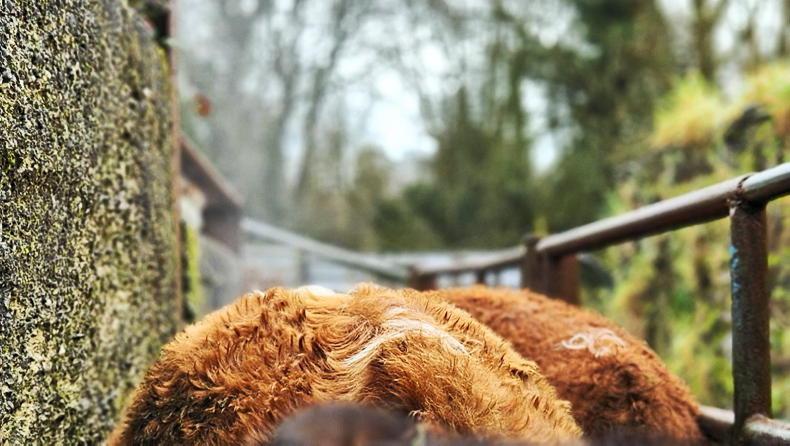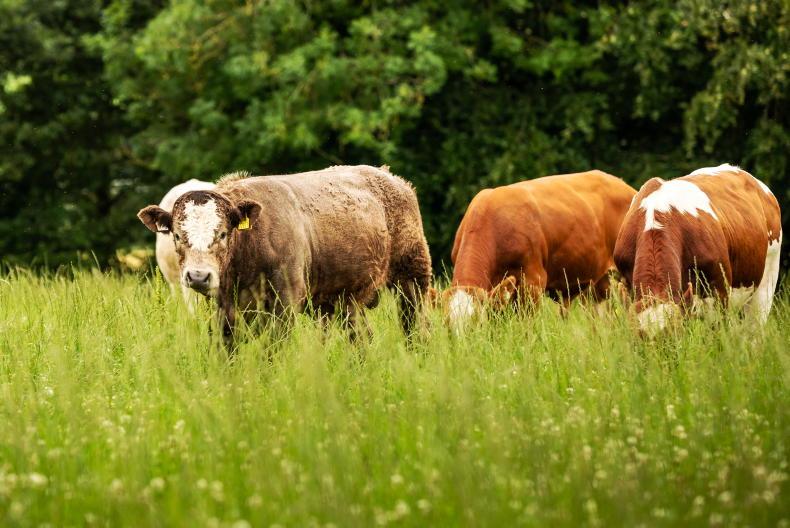Back in January 2022, I wrote about issues with conception in my autumn-calving herd.
It was not just about getting animals to hold to service, as there were also cows and heifers that I had not seen repeating. So it is possible that they showed quiet or silent heats.
I did lots of investigation into the situation, but could not come to any definite conclusion. I had a niggling fear that it was to do with my own skills at artificial insemination (AI), although there have been no issues with my spring-calving cows.
I even considered purchasing a bull, but I eventually talked myself out of that.
A bull does not really suit my system, as it would get complicated once I started retaining heifers for breeding.
Breeding and nutrition
Autumn-calving sucklers can be a really good system when everything works, but it does involve going against the norm. Before cattle were domesticated, the natural time to calve would have been the spring.
The cows would only cycle in the warm summer days with lots of daylight. They would go into a non-cycling state during the winter. It is only by genetic selection and better nutrition that we have been able to breed our cows out of season.
This was niggling away in the back of my mind when I was looking back at the problems I had with my autumn herd last year. The breeding part should be OK, but I think that my nutrition might not have been good enough.
Last year’s silage was not as good as I would have wanted and maybe I did not feed enough meal to compensate for this. This year, I set out to make it better quality, and the silage I now have for the cows is definitely superior.
I have also started early with the meal feeding, so I am fairly confident that I am in a better place as far as nutrition is concerned.
Non-cycling
There was one other thing that was bugging me, which relates to the heifers that I would be trying to breed at this time of year.
Other years, there would be heifers that would show no signs of heat activity. As a result I have previously tried to induce heats, and I have even tried fixed time AI, but the success has been extremely poor.
I have come to the conclusion that these heifers are in a non-cycling state, and at this stage, there is very little that can be done to get them out of it. I thought about what I could do, on the understanding that it must be tried well in advance of breeding.
I decided to put one of my teaser bulls out with the heifers in August and see if I could encourage them to start cycling in advance of housing. It seems to have worked. All heifers showed heats while they were out in the field.
They have now been housed for almost four weeks and I am about halfway through the first cycle of artificial insemination, and I have more than half the heifers inseminated.
They have also showed strong heats, as have the cows, and I have over half of them inseminated as well.
I know that it is very early days yet, but I am hopeful that I might have found an answer to a problem that has been annoying me for almost a year.
There are a lot of positives with calving cows in the autumn, but it certainly takes no prisoners and if you do not get everything right, it can go all wrong.
The nutritious grass in May and June can hide problems in the spring-calving cows, but there is no hiding place with an autumn herd.
Excellent-quality silage is a must, along with having your breeding and management at a high standard.
Read more
Farmer Writes: stung by empty rate in autumn cows
Getting to the bottom of fertility issues
Back in January 2022, I wrote about issues with conception in my autumn-calving herd.
It was not just about getting animals to hold to service, as there were also cows and heifers that I had not seen repeating. So it is possible that they showed quiet or silent heats.
I did lots of investigation into the situation, but could not come to any definite conclusion. I had a niggling fear that it was to do with my own skills at artificial insemination (AI), although there have been no issues with my spring-calving cows.
I even considered purchasing a bull, but I eventually talked myself out of that.
A bull does not really suit my system, as it would get complicated once I started retaining heifers for breeding.
Breeding and nutrition
Autumn-calving sucklers can be a really good system when everything works, but it does involve going against the norm. Before cattle were domesticated, the natural time to calve would have been the spring.
The cows would only cycle in the warm summer days with lots of daylight. They would go into a non-cycling state during the winter. It is only by genetic selection and better nutrition that we have been able to breed our cows out of season.
This was niggling away in the back of my mind when I was looking back at the problems I had with my autumn herd last year. The breeding part should be OK, but I think that my nutrition might not have been good enough.
Last year’s silage was not as good as I would have wanted and maybe I did not feed enough meal to compensate for this. This year, I set out to make it better quality, and the silage I now have for the cows is definitely superior.
I have also started early with the meal feeding, so I am fairly confident that I am in a better place as far as nutrition is concerned.
Non-cycling
There was one other thing that was bugging me, which relates to the heifers that I would be trying to breed at this time of year.
Other years, there would be heifers that would show no signs of heat activity. As a result I have previously tried to induce heats, and I have even tried fixed time AI, but the success has been extremely poor.
I have come to the conclusion that these heifers are in a non-cycling state, and at this stage, there is very little that can be done to get them out of it. I thought about what I could do, on the understanding that it must be tried well in advance of breeding.
I decided to put one of my teaser bulls out with the heifers in August and see if I could encourage them to start cycling in advance of housing. It seems to have worked. All heifers showed heats while they were out in the field.
They have now been housed for almost four weeks and I am about halfway through the first cycle of artificial insemination, and I have more than half the heifers inseminated.
They have also showed strong heats, as have the cows, and I have over half of them inseminated as well.
I know that it is very early days yet, but I am hopeful that I might have found an answer to a problem that has been annoying me for almost a year.
There are a lot of positives with calving cows in the autumn, but it certainly takes no prisoners and if you do not get everything right, it can go all wrong.
The nutritious grass in May and June can hide problems in the spring-calving cows, but there is no hiding place with an autumn herd.
Excellent-quality silage is a must, along with having your breeding and management at a high standard.
Read more
Farmer Writes: stung by empty rate in autumn cows
Getting to the bottom of fertility issues









SHARING OPTIONS